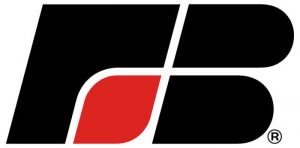With serious economic challenges facing agriculture, underscored by even deeper concerns in some commodity sectors, the American Farm Bureau Federation board of directors outlined the organization’s key objectives for the 2018 farm bill. After its meeting in Washington, D.C., the AFBF board sent its goals and recommendations to leadership on the Senate and House agriculture committees in anticipation of the upcoming farm bill debate.
“Because of low commodity prices, many of America’s farmers and ranchers are struggling,” said AFBF President Zippy Duvall. “The risk management and safety net provisions of farm bills are most important in times like these.
“The bill also will help protect our nation’s food security and our supply of domestic renewable energy and fiber. It will provide critical food assistance to those who need it, and it will continue to offer incentives to conserve our natural resources. Farm Bureau stands ready to work with the House and Senate ag committees to ensure the next farm bill works for farmers, ranchers and all Americans.”
In a letter, Duvall told the congressional ag committee chairmen, Sen. Pat Roberts and Rep. Mike Conaway, and ranking members, Sen. Debbie Stabenow and Rep. Collin Peterson, that Farm Bureau is prepared to help them “achieve the best possible farm bill that meets our key farm policy objectives while assisting you in meeting the challenges this important legislation will endure.”
As outlined in the letter, Farm Bureau’s goals for the next farm bill are to:
- Protect current farm bill spending;
- Maintain a unified farm bill that includes nutrition programs and farm programs together;
- Ensure any changes to current farm legislation be an amendment to the Agricultural Adjustment Act of 1938 or the Agricultural Act of 1949;
- Prioritize our top funding concerns (risk management tools, which include both federal crop insurance and Title I commodity programs); and
- Ensure programs are compliant with World Trade Organization agreement
The AFBF board also presented the following farm policy recommendations based on these goals:
- Allow farmers to select the “higher of” the five-year Olympic Average yield for the Agriculture Risk Coverage County Program or a simple 10-year average yield.
- Increase the reference price used as a floor for the ARC-CO program by 5 percent for corn, soybeans, wheat, sorghum and other minor crops.
- Support a cotton lint program and/or designating cotton seed as an “other oilseed” to make cotton eligible for Title 1 commodity support programs.
- Improve the Dairy Margin Protection Program by supporting a package that contains the following provisions: a) a two-tiered approach to providing a safety net for dairy by continuing to treat production of 4 million pounds of milk covered annually differently than more than 4 million pounds of production; b) increase the administrative fee from $100 to $300 for catastrophic level of protection; c) reduce premium rates 25 percent from the current rate for the first 4 million pounds of production history covered and increase premium rates 25 percent from the current rate for coverage above 4 million pounds; d) lower the maximum coverage level from $8.00 to $7.00; e) raise the catastrophic level from $4.00 to $4.50; and f) increase the feed ration formula for all producers by 10 percent.
- Increase the $20 million annual cap on livestock insurance products to $75 million annually.











